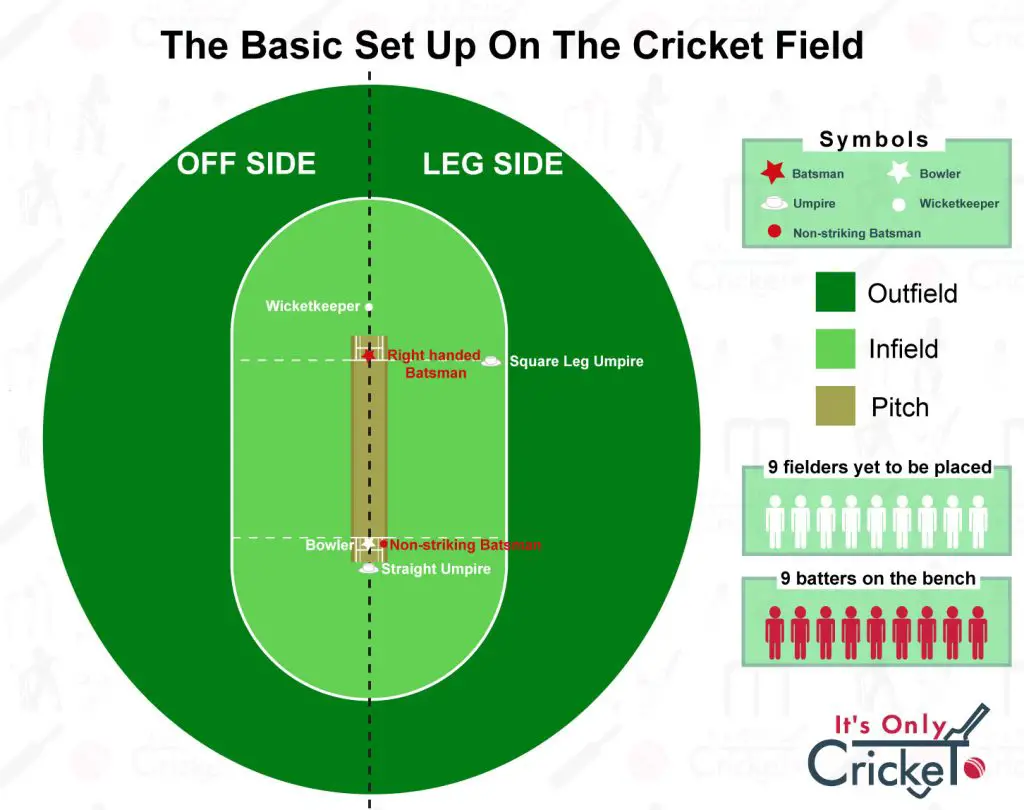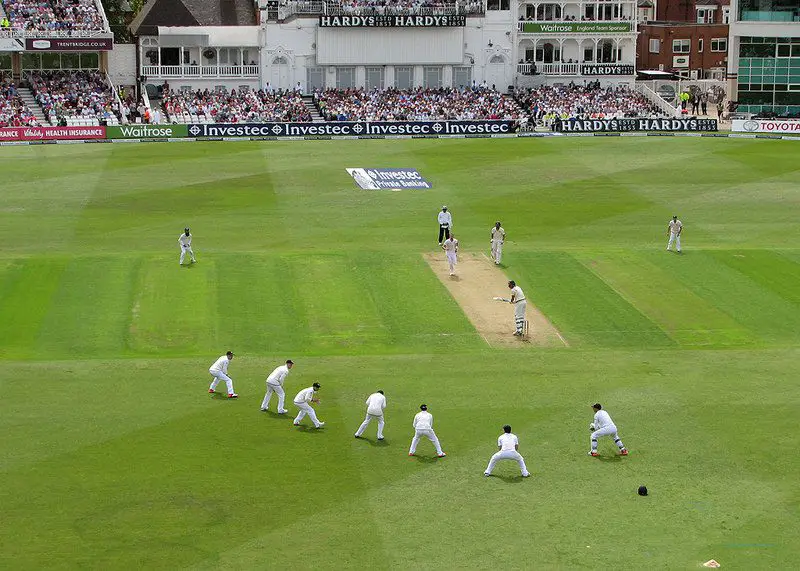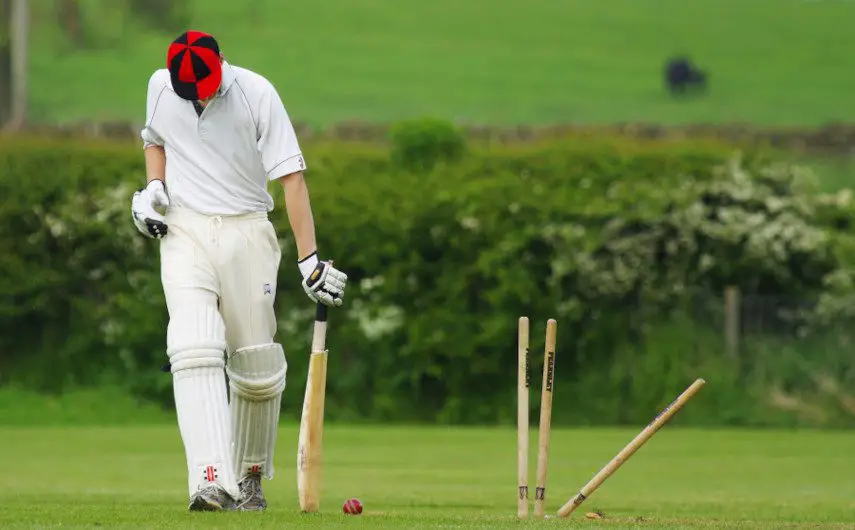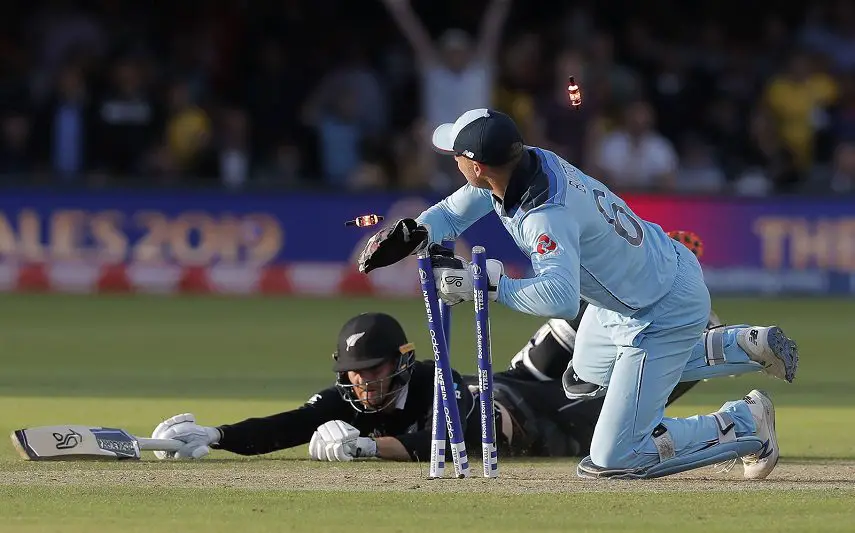Table of Contents
It’s important to understand the difference between off side and leg side in cricket, and where are these two sections during the match for a number of reasons. They are particularly crucial in terms of field positioning and the laws of the game.
What is Off Side and Leg Side in Cricket?
A cricket field can be split into two halves either side of the wicket. These hemispheres are known as the off side and the leg side and they are defined according to the position of the batsman.
For a right handed batsman, the leg side covers all parts of the cricket field located on their left hand side. The off side will, therefore, relate to the section on their right.
For left handed batsmen, the positions will reverse. A left handed batsman has the leg side on their right and the off side on their left side.
The Significance of On and Off Sides
The leg side is sometimes referred to as the leg side. The two terms relate to the same side of the wicket and both are acceptable in modern cricket terminology.
The terms can be useful for anyone studying other areas of the game such as the various types of batting shots and fielding positions. Phrases such as leg gully, mid off, long leg and long off are in use and, by understanding where the two sides of the pitch are located, observers will be able to identify the general locations of those fielders.
The same practise can then be applied when they play shots such as the off drive or leg glance. Keep reading for more info on batting shots and how they relate to the off and leg sides.

Laws Relating to Fielding Positions
The most important law relating to the two halves of a cricket pitch refers to the leg side. In all forms of the game, a fielding side is not permitted to place more than two fielders behind square on the leg side. If a ball is delivered and this law is transgressed, the umpire should call ‘no ball’.
The term ‘behind square’ relates to all positions behind the wicket at the batsman’s end.
Laws are also in place regarding fielding positions in one day cricket matches but they are not specific to either the leg or off sides. For example, in a power play situation, a team may only be allowed to place two fielders outside of the 30 yard circle. (Read more: What is powerplay?)
In test and first class cricket, there is no 30 yard circle and the fielding side can stand in any position as directed by the captain and bowler. In all forms of the game, however, that law pertaining to fielders behind square on the leg side is constant.
Offside and Legside Shots
Many shots in cricket are, by their very definition, intended to be played through either the off or the leg side. There are very few strokes that can go in either direction – provided that they are executed correctly by the batsman.
A good example of this comes with the drives. An on drive goes through the leg side while an off drive clearly goes through the offside. The anomaly is the straight drive which is unlikely to ever be completely straight and can travel through either the off or leg side.
Other strokes do not necessarily have the words ‘off’ or ‘on/leg’ attached to them but these will also be played through specific sides of the wicket. For example, the cut is an off side shot while the sweep, the hook, the pull and obviously the leg glance will be played through the leg side.
Setting a Field
The understanding of offside and leg side play can also help captains to set their fields. We’ve already seen that current laws forbid teams from placing more than two fielders behind square on the leg side but there is much more to think about.
In the main, there will be more fielders placed on the off side and the leg. Most shots, particularly ones that aren’t well executed, will head towards the off side.
If you think about a field on the first day of a test match, there will be a number of slips in play. In addition, the wicket keeper will be standing slightly towards the off side. A false shot, such as an edge, is more likely to come from the outer half of the bat and go in the direction of those slips.

An edge on the inside of the bat can go to the leg side but the batsman’s body is now in the way. He or she has a chance of edging the ball into their pads, body or possibly the stumps and that possibility doesn’t exist with off side play.
Bowlers will also target the off side more. Leg side shots come with less of a degree of risk so the ball is kept more outside of the off stump. Remember too that in limited overs cricket, any delivery slightly outside of leg stump is a wide so bowlers will avoid this area.
A good captain will always assess whether a batter is stronger on the leg side or the off side but all of these factors will lead to more fielders being placed on the off side.


